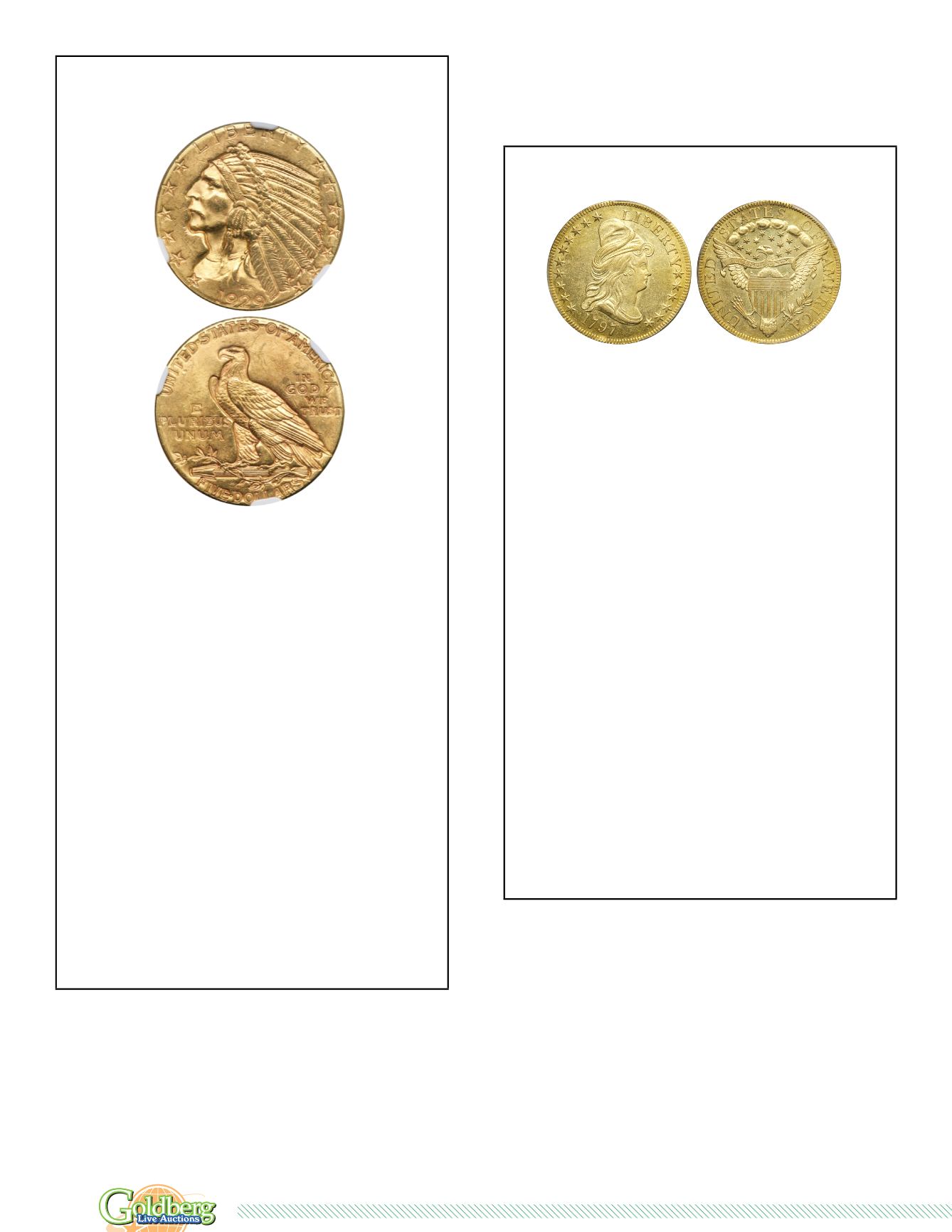
288
|
$5 Gold/$10 Gold
K
EY
D
ATE
1929 $5 I
NDIAN
1882
1929 NGC graded Unc Details
. Improperly cleaned. Well
struck. A popular key date. We feel this coin should be
graded MS-60+. During 1929, the Philadelphia Mint pro-
duced Quarter Eagles, Half Eagles, and Double Eagles, but
no Eagles, while the branch mints were left out of the pic-
ture on the subject of gold coins, none were struck at Den-
ver or San Francisco. It appears that the Quarter Eagle of
1929 is the only common issue with general availability,
while Half Eagles and Double Eagles are both rare and hard
to pin down. For collectors of Indian Half Eagles, examples
in lower end Mint condition are offered from time to time
like this well struck, lustrous example, but finer Gem quality
pieces are mostly unobtainable.
The 1929 Half Eagle is a perfect example where the original
mintage is a misleading indicator of how truly scarce the
coin is. Mintage was listed as 662,000; however, the great
bulk of these must have stayed with the Treasury or been
locked in bank vaults, as only a few hundred remain. Most
are believed to have been melted in 1934 and later years
after the government "nationalized" (seized) the gold coins
held in reserve for the US public against bank deposits and
Gold Certificate notes, and recast them into "coin gold"
ingots of 90% fineness. The bars went to the newly con-
structed Fort Knox in Kentucky. Few collectors of the day
realized the consequence of this seizure and so few
retained any 1929 Half Eagles for their collections. (
PCGS
# 8533
)
Estimated Value .............................................$25,000-UP
Enlargement
$10 G
OLD
$10 Capped Bus t
1797 L
ARGE
E
AGLE
$10 C
APPED
B
UST
1883
1797. Large Eagle BD-2 Rarity 4+
.
PCGS graded AU-
58 PQ
. Well struck with lots of luster visible on both sides.
Long tapered neck on the eagle. Mostly well struck and
replete with frosty mint luster, particularly so on the
reverse. Free from adjustment marks and other defects,
just some light handling marks in the exposed fields. A very
attractive AU58 specimen, all things considered, and note-
worthy in many respects for its high condition.
When the quarter eagle went into production in 1796, it
bore the same obverse as on the eagle and half eagle, but
with a new reverse, generally known as the heraldic eagle.
The heraldic eagle reverse makes its appearance on the
$10 gold in 1797 where it bears a somewhat more full-bod-
ied eagle than on the small eagle design struck early in the
year. The eagle now gazes to the left on the new design
and holds in its beak a ribbon inscribed E PLURIBUS UNUM,
a Latin phrase connoting One Among Many. A shield is
mounted on the eagle’s breast. The eagle holds a bundle of
arrows in its right talons (the viewer’s left) and an olive
branch in its left talons, and is similar to that found on the
Great Seal of the United States.
UNITED STATES OF AMERICA encircles the design, as on
the small eagle 1797. A semicircle of clouds stretches from
wing to wing, with 13 stars positioned between the clouds
and the eagle in arrangements that vary from die to die.
Mint engraver Robert Scot’s new reverse was introduced on
the eagle in mid-1797, so eagles of this year are found with
both reverse design types. The estimated mintage of the
1797 capped bust, heraldic eagle $10 is 10,940.
Pop 27;
39 finer
. (
PCGS # 8559
)
Estimated Value .....................................$37,000 - 39,000


